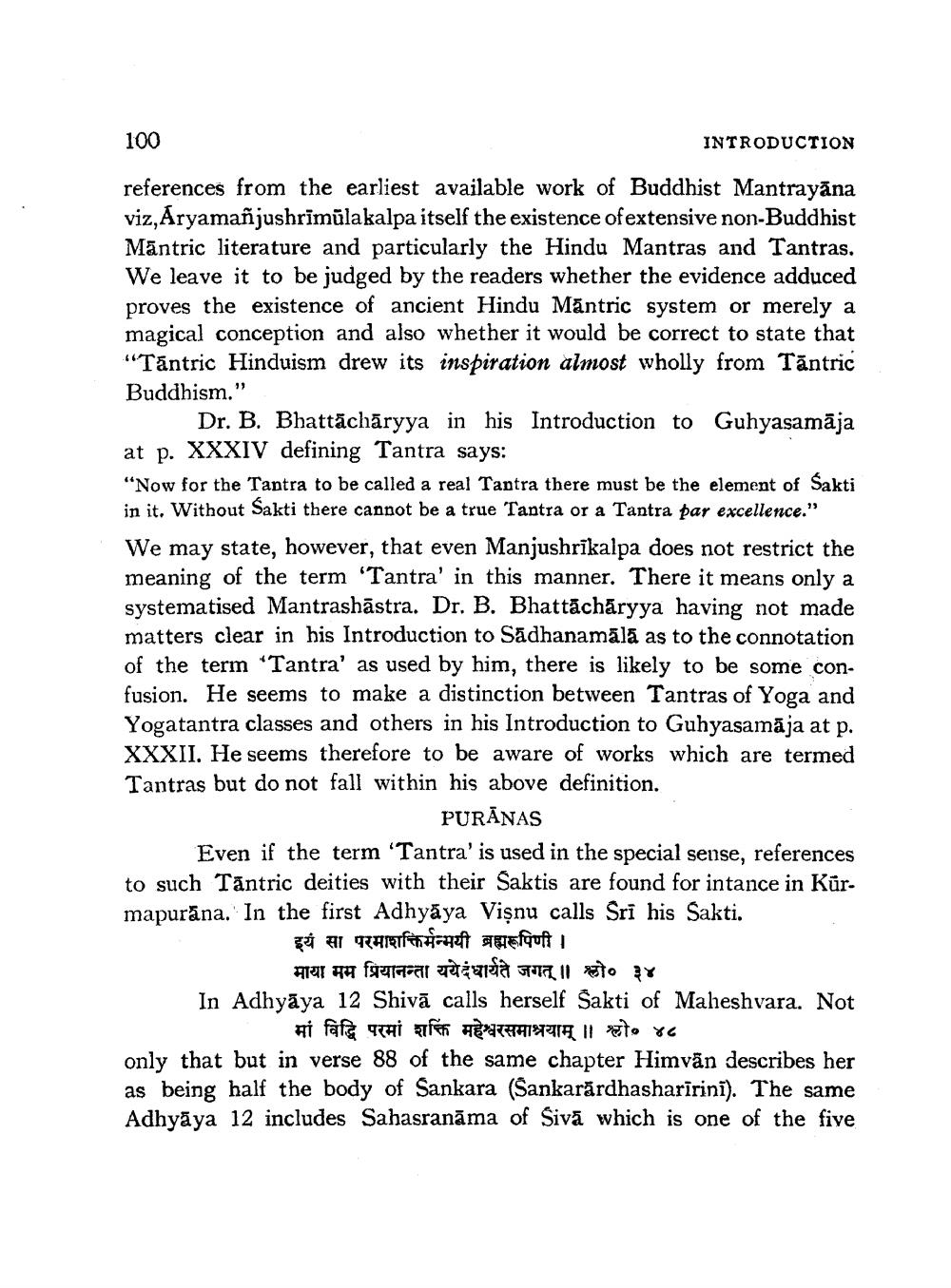________________
100
INTRODUCTION
references from the earliest available work of Buddhist Mantrayāna viz, Aryamañjushrimülakalpa itself the existence of extensive non-Buddhist Mantric literature and particularly the Hindu Mantras and Tantras. We leave it to be judged by the readers whether the evidence adduced proves the existence of ancient Hindu Mantric system or merely a magical conception and also whether it would be correct to state that "Tántric Hinduism drew its inspiration almost wholly from Tântric Buddhism."
Dr. B. Bhattāchāryya in his Introduction to Guhyasamāja at p. XXXIV defining Tantra says: "Now for the Tantra to be called a real Tantra there must be the element of Sakti in it. Without Sakti there cannot be a true Tantra or a Tantra par excellence." We may state, however, that even Manjushrīkalpa does not restrict the meaning of the term 'Tantra' in this manner. There it means only a systematised Mantrashāstra. Dr. B. Bhattāchāryya having not made matters clear in his Introduction to Sadhanamālā as to the connotation of the term "Tantra' as used by him, there is likely to be some confusion. He seems to make a distinction between Tantras of Yoga and Yogatantra classes and others in his Introduction to Guhyasamāja at p. XXXII. He seems therefore to be aware of works which are termed Tantras but do not fall within his above definition.
PURĀNAS Even if the term 'Tantra' is used in the special sense, references to such Tāntric deities with their Saktis are found for intance in Kürmapurāna. In the first Adhyāya Vişnu calls Sri his Sakti.
इयं सा परमाशक्तिर्मन्मयी ब्रह्मरूपिणी ।
माया मम प्रियानन्ता ययेदंधार्यते जगत् ॥ श्लो० ३४ In Adhyāya 12 Shivā calls herself Sakti of Maheshvara. Not
___मां विद्धि परमां शक्ति महेश्वरसमाश्रयाम् ॥ श्लो० ४८ only that but in verse 88 of the same chapter Himvān describes her as being half the body of Sankara (Sankarārdhasharirini). The same Adhyāya 12 includes Sahasranāma of Sivā which is one of the five




